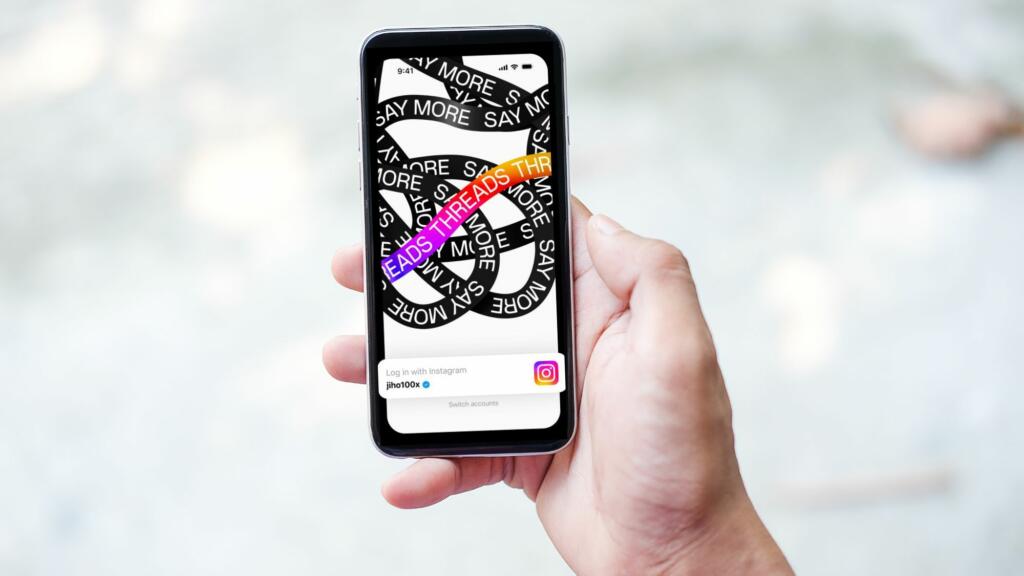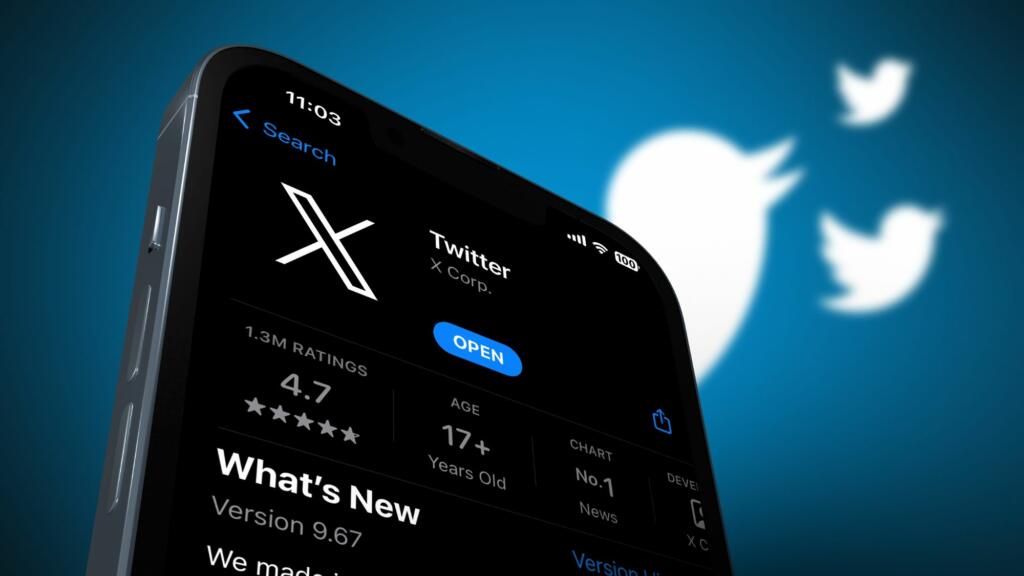
What is Threads? Unravelling the new social media platform
Jayne Cherrington-Cook
Adding the X-factor to Twitter, Elon Musk has given the popular social-media network a rebrand – here’s why…
There have been many changes to Twitter since Elon Musk snapped up the social-media network for $44 billion (£35 billion) in October 2022.
From staff redundancies to making people pay for their blue tick – which used to signify that the account had been verified by Twitter, so users would know it was genuine – the entrepreneur has made his mark on Twitter, with the latest change perhaps being his most controversial yet.
On 23 July, Musk announced that Twitter would now be known as X, and since then the official @twitter handle has been rendered inactive and replaced by @x.
There have been many changes to Twitter since Elon Musk snapped up the social-media network for $44 billion (£35 billion) in October 2022.
From staff redundancies to making people pay for their blue tick – which used to signify that the account had been verified by Twitter, so users would know it was genuine – the entrepreneur has made his mark on Twitter, with the latest change perhaps being his most controversial yet.
On 23 July, Musk announced that Twitter would now be known as X, and since then the official @twitter handle has been rendered inactive and replaced by @x.
 Credit: Shutterstock/bluecat_stock
Credit: Shutterstock/bluecat_stockPart of a bigger plan that Musk has for the site, the new name is also intended to signify a fresh start for the network, which has been plagued with issues since Musk took it over.
Linda Yaccarino, chief executive of the network, said in a tweet: “It’s an exceptionally rare thing – in life or in business – that you get a second chance to make another big impression. Twitter made one massive impression and changed the way we communicate. Now, X will go further, transforming the global town square.”
While the name has been changed, if you go to the twitter.com website, the web address still works, and if you go to X.com, you’ll get redirected to twitter.com.
The platform has undergone a rebrand, replacing its iconic bird logo with an X. The mobile apps for Twitter have also been updated with the new logo.
Why am I still seeing the bird Twitter logo?
If the old Twitter logo is showing on your mobile app or you’re still seeing it as the icon on your phone, you’ll need to update it.
To do this, go to the App or Play store and search for Twitter or X and then choose the update option. This will then ensure all the new branding is in place.
This can be a bit hit and miss. In our experience so far, after we updated the app, it first showed as an X but then reverted back to the Twitter bird.
There are also many elements of the original Twitter left, including wording such as “Load more tweets”, so on the face of it, very little is different for users.
If you are a Twitter Blue subscriber (that is, you pay the £9.60/$8 monthly fee for your blue tick), the one added benefit you’ll have is the ability to change the colour of the X logo.
What do we call tweets now?
Now the platform goes by the name of X, it seems we’ll be retiring the word tweet from the dictionary as well. The button that previously said “tweet” now says “post”, so it looks as if we’ll now be merely “posting” when we share our 280-character thoughts.
Marketing consultant Roz Colthart is excited by the new rebrand and the possibilities of it kickstarting a whole new language.
“I love the thought of how this can expand,” she tells Saga Exceptional. “The use of x has so many possibilities. Will tweets become xpressions, xchanges, xnotes or xtracts or even simply just a ‘x’ as in a kiss? The world could do with more of that!”
Twitter’s decision to change its name to X signifies a strategic move to expand beyond being just a social-media platform. Musk’s ultimate aim is to turn X into an “everything” app.
When he bought the social network last year, Musk announced his grand vision for it, posting that: “Buying Twitter is an accelerant to creating X, the everything app.” With the rise of new competitors and the ever-changing digital landscape, he recognises the need to evolve and offer more than just a platform for sharing short messages.
Drawing inspiration from the popular Chinese app WeChat, Musk envisions Twitter to be a fusion of social media, instant messaging, payment services and even food orders.
 Credit: Shutterstock/kovop
Credit: Shutterstock/kovopPeter Watson, managing director of marketing agency Distract, told us that changing a brand’s core business requires a big change like this.
“When a brand’s change of direction is so big, it can be impossible to pivot from the core business itself, hence the need for a complete rebrand,” he says.
“Twitter’s brand credibility is so [closely] linked to being a social network that many of its users would’ve been confused as to what it actually was if [all they’d done] was a simple name change. So changing the entire brand from Twitter to X opens the app up to the possibility of new people and markets.”
After a turbulent few months at the helm, Musk is probably also hoping that the new branding and name will help him start afresh, distancing the app from the company’s past controversies.
Brand and marketing strategist Niki Hutchison believes the opposite might happen.
“By demonstrating just how ego-led and misguided his strategy, Musk has only succeeded in further undermining his own credibility amongst users of the platform and the general public alike,” she told us.
The letter X has long been a personal favourite of Musk’s. His first company was called X.com, which later merged with Confinity, the creator of PayPal, while his space-exploration company is called SpaceX.
His love of this letter also extends to his personal life – his son with singer Grimes is snappily named X AE A-XII.
 Credit: Shutterstock/Sundry Photography
Credit: Shutterstock/Sundry PhotographyMusk has said that he chose the name X because it is “a blank slate” and represents the company’s potential to become something new and different. He also said that he wants the name to reflect the company’s focus on “innovation, simplicity and utility”.
Marketing consultant Veronica Pullen believes Musk has been shortsighted with the naming of the new brand.
“TwitterX would have been the perfect rebrand. Keep the years of brand recognition and goodwill intact and add his brand to it – like a double-barrelled name. And it would have been congruent with his SpaceX brand, too.”
And soon we shall bid adieu to the twitter brand and, gradually, all the birds
— Elon Musk (@elonmusk) July 23, 2023
While labelling a brand with just one letter may seem strange, some experts think this is a clever way to make the social network more popular in the long run.
“Choosing one letter makes it more mysterious, exclusive and powerful, as less is more and it is more of a statement,” says lifestyle expert Vicki Bahra.
“It’s also a powerful letter which can mean many things. I think it’s a big statement after the introduction of Threads [a new app that’s similar to Twitter, which was launched by Meta Platforms – the owner of Facebook and Instagram] and perfect timing to make the social-media platform more exciting again.”
The name change has been met with mixed reactions from users. Some people have welcomed it, saying it is a fresh start for the company. Others have criticised it, believing the name change to be unnecessary and confusing.
“I think as long as he rebrands everything and is consistent – so there is no confusion/grey lines – then it’s got so much potential,” says Colthart.
“My only negative is it looks just like a Celebrity Cruise ship funnel on a dark night in the ocean!”
Which brings us to another potential issue with the rebrand: using the letter X may cause something of a legal nightmare for Musk.
“Any new brand like this will want to ensure their rights are registered as trade marks around the world, and I would hasten a guess that there are quite a few businesses around the world that use trade marks based around an X symbol,” Simon Barker, partner and head of intellectual property and media at Freeths told us.
“Certainly, any new brand aspiring to cover everything, may well find it difficult to register its mark without opposition from such third parties.”
 Credit: Shutterstock/Hopix Art
Credit: Shutterstock/Hopix ArtThose who might be inclined to sue include tech giants Microsoft and Meta.
Since 2003, Microsoft has owned the X trademark specifically associated with the Xbox video-game system. Meta Platforms, the company that owns Facebook and is behind Threads, stepped into the arena with its own trademark blue-and-white X, registered in 2019.
There’s also been some backlash against the X at the HQ in San Francisco, where a huge, flashing X was placed on top of the company’s building. Cue 24 complaints from locals. It’s now been reported that the X has been removed due to violating building regulations.
X logo installed atop Twitter building in SF; city to investigate permit violation@realchrisjbeale said: “It's hard to describe how bright it made this intersection… it's was still just like a flash of lightning going off. @KPIXtv https://t.co/YXuzzv3TCs pic.twitter.com/Ww10HWFXLd
— Betty Yu (@bett_yu) July 30, 2023
Marketing expert Karen Webber believes it will take consumers some time to get their heads around the change.
“Users won’t stop calling X Twitter in any hurry, as we are creatures of habit,” she says.
“Posts will continue to be referred to as ‘tweets’, just like people said they were ‘tweeting on Threads’ when Meta launched it last month. We’ve seen people abandon Twitter en masse, and it seems the ones who are clinging on are those who are least open to change.”
Only time will tell whether the name change will be a success. However, it is clear that Musk has big plans for Twitter.
“The change isn’t a conventional brand tweak,” says Watson.
“It’s not simply a brand name change. It’s a needed rebrand to allow the app to do so much more than it currently does, opening up a whole world of new opportunities.”

Written by Jayne Cherrington-Cook she/her
Published: Updated:
Jayne is the Senior Editor at Saga Exceptional. She cut her online journalism teeth 24 years ago in an era when a dialling tone and slow page load were standard. During this time, she’s written about a variety of subjects and is just at home road-testing TVs as she is interviewing TV stars. A diverse career has seen Jayne launch websites for popular magazines, collaborate with top brands, write regularly for major publications including Woman&Home, Yahoo! and The Daily Telegraph, create a podcast, and also write a tech column for Women’s Own.

Jayne Cherrington-Cook

John McCann

Andrew Williams
John McCann